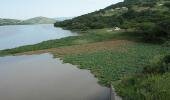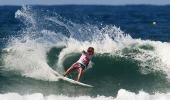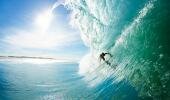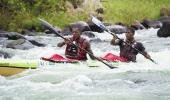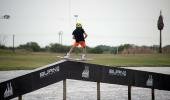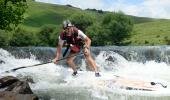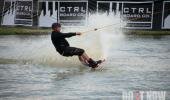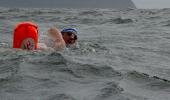Words: Andrew Kellett | Photos: Paddlezone-starboard
I am by no means an expert surfer, but have used my 16 years of white water kayaking experience to help me get into and hooked on stand up paddle surfing (SUP). This surface water sport is a variant of surfing, where the surfer uses a paddle to move through water while standing on a surfboard.
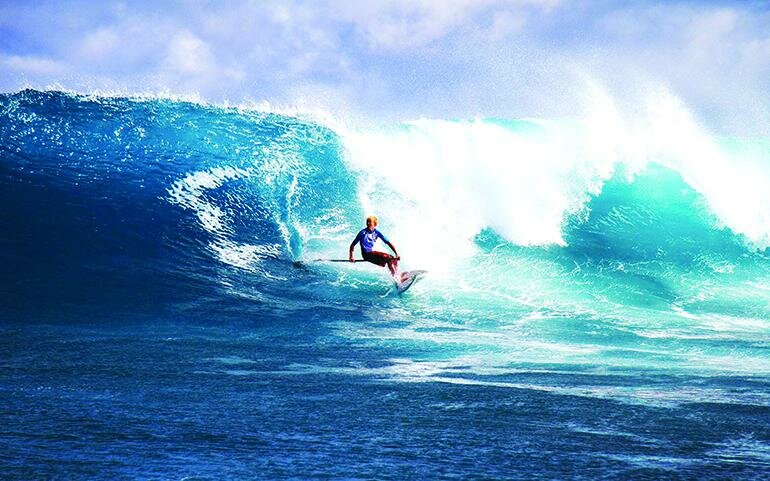
Photo credit: Paddlezone-starboard
One difference between surfing and SUP is that the latter does not need a wave and you can paddle anywhere; the open ocean, in harbours, on lakes, rivers or any large body of water. As you are standing, one of the advantages is better visibility of marine life or the incoming swells of the ocean marching across the horizon.
Where did SUP start?
The popularity of the modern sport of SUP has its origin in the Hawaiian islands, although there is evidence of similar activities in west Africa and elsewhere.
In the early 1960s, the ‘Beach Boys’ of Waikiki would stand on their long boards and paddle out with outrigger paddles to take pictures of tourists learning to surf. This is where the term ‘Beach Boy Surfing’ originates and is another name for SUP. The sport later died out with the introduction of shorter, lighter fibreglass boards.
SUP started gaining in popularity again in the early 2000s, when legendary Hawaiian surfers such as Dave Kalama, Brian Keaulana, Rick Thomas, Archie Kalepa and Laird Hamilton used SUP as an alternative way to exercise, training their core and legs for tow-in surfing when the surf was down, and for the pure enjoyment of the sport. It also gave them a paddling advantage that allowed them to catch waves early, and the paddle could be used to help carve into turns, improving the manoeuvrability of the long boards they used. As the years went by, they found themselves entering events such as the Moloka’i to O’ahu Paddleboard Race and Mâkaha’s Big Board Surfing Classic. Now you can find SUP surfers in many of the Outrigger and Paddleboard races participating in their own division.
In the 10 years that the sport has existed, there have been many new developments. There are different styles of SUP for racing, relaxing and family events, as well as a greater choice of boards and fashion wear.
The sport of SUP is categorised by the following basic disciplines:
• Flat water/Touring – this discipline appeals to all skill levels on any body of water. Generally the boards are longer and wider, with extra volume to make them stable and easier to use. As you are looking down into the water you are able to take in all the ocean has to offer, whereas when sitting in a kayak the glare on the water prohibits this.
• Race – this is a relatively new development in the sport and like any other sport competitiveness has led to faster and sleeker boards specifically designed for racing conditions. Most race boards are still stable, but because of the waterline length they are less manoeuvrable and harder to turn. Events take place on the ocean with +10km downwind races, as well as on canals in fairly urban areas, such as harbours and waterfront developments, thus making it accessible to the general public
• Surf – this is the fastest developing aspect of the sport. The designs of the boards are based on performance surf boards, which are shorter to allow for maximum performance on the wave. This can be quite tricky for beginners so choose your board carefully when entering the sport or you could be doing more swimming than surfing!
• River – this is a relatively new development in the sport using plastic and inflatable boards to handle the demands of the river environment. Ultimately the sky is the limit in this discipline, but it is ideally suited to class 1 and 2 rivers for beginners to intermediate paddlers, and class 3 for the more advanced paddlers.
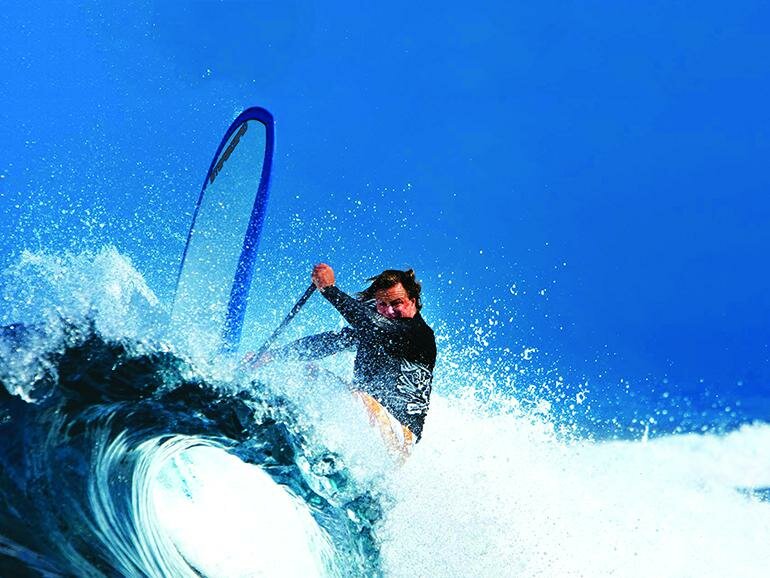
Photo credit: Paddlezone-starboard
What to look out for when buying equipment
All you need to get involved in SUP is a paddleboard and paddle. I would also suggest you invest in a board bag as it will extend the life of your board, protect it from knocks and scratches and, most importantly, from the harsh sun. A leash and buoyancy aid is required for ocean, surf and river outings. You will also need a set of roof racks for your vehicle for transportation, as some of the longer boards are close on 14ft. These basic equipment requirements make SUP very easy to get into and inexpensive when comparing it to other water sports like windsurfing and kite boarding.
Second-hand equipment is also an option and easy to come by due to many of the original paddlers upgrading their boards.
But before you make any purchases, get some advice so that you choose the right board for the discipline you want to get into. When starting out, look for a more stable board as you can always upgrade as you progress.
Where do I get the gear?
There are various importers of gear, but in general they are all manufactured in Thailand. The older, more established brands will ensure a state-of-the-art design, as well as a good resale value when upgrading at a later stage. Second-hand boards are entering the market and there are some great package deals to be found through the surf shops and second-hand sites on the internet.
Cape Town-based Paddlezone stocks a range of Starboard boards, as well as accessories including Werner paddles from the States. Lessons are available and you can try out the demo boards before purchasing. Other leading brands to look out for are Naish and Coreban.
10 good reasons to get into SUP
1. Fun
Paddle boarding is the most exciting sport you will ever try, guaranteed! It allows you to get out there and experience fun wherever you paddle and whatever your discipline.
2. Easy
If you can stand up then you can definitely SUP, it’s that easy. The sport is aimed at all skill levels and there is scope for moving onto new challenges within the same sport!
3. Health and exercise
It’s a great workout! It works the whole body, focusing on the core, and also offers an aerobic workout. So it has the benefits of Pilates and running at the same time.
4. Relax and revitalise
It’s one of the most relaxing and meditative sports you can do. On a calm day, the feeling of gliding across the glassy water is one of the most relaxing experiences ever.
5. For everyone
Unlike other sports, SUP is ideal for all ages. Kids start off as passengers and before you know it, they will they be paddling on their own – and more than likely leaving you in their wake. Even poochie can ride along with you!
6. Anywhere, anytime
Because it’s so versatile, you can do it anywhere you find water – lakes, rivers and oceans, and in any weather condition as there’s no need to wait for a full swell.
7. Connect with nature
You’ll get to see nature in action from the most perfect viewpoint; amazing sea life, beautiful sunsets and serene sunrises.
8. Solo or social
With SUP you can spend some meditative time alone or share the fun with friends.
9. Family and kids
Because SUP is so child-friendly, it’s an awesome way to spend quality time as a family unit.
10. Addictive and effortless
There’s something about the sense of freedom and power you get when you’re on a SUP board that will have you begging for more.
Good luck and get out there.
